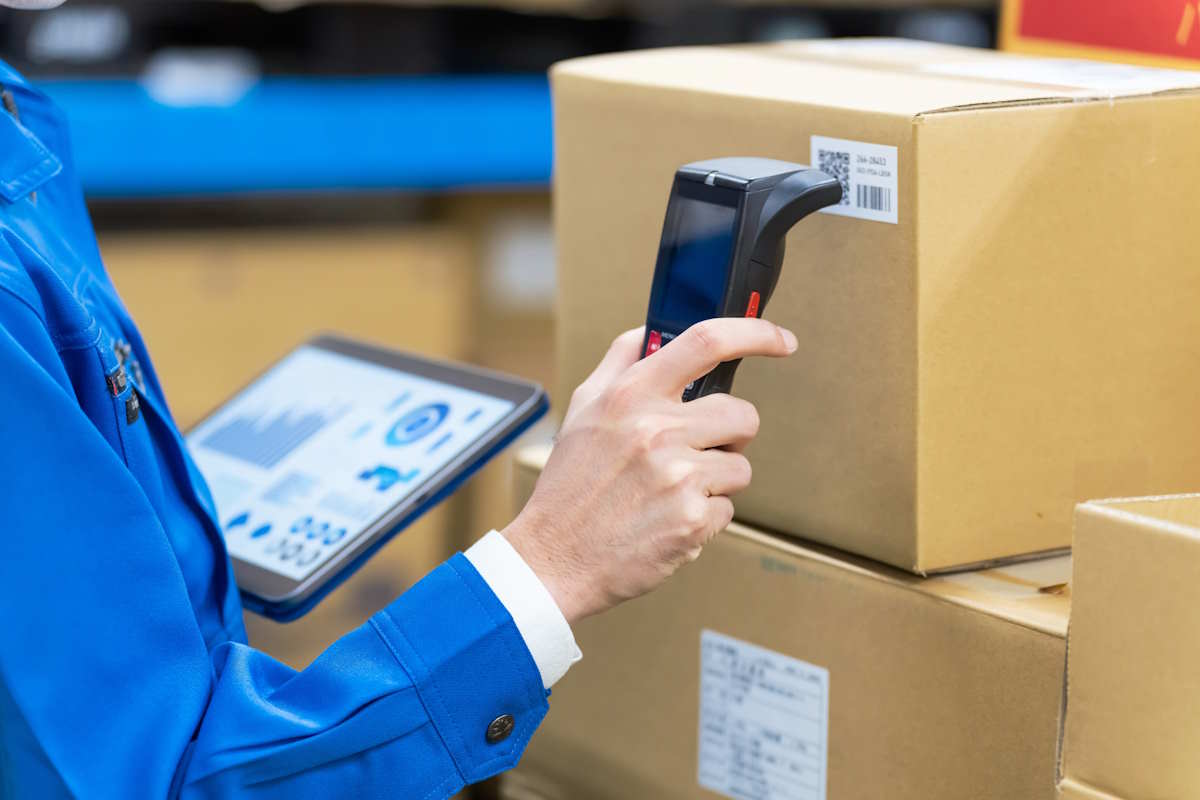Every stage in the supply chain is under pressure to perform. That’s because if one stage fails, it can set off a cascading effect, causing subsequent stages to fail as well.

But for every stage to run as it should, it needs a level of visibility and efficacy that traditional, manual methods struggle to provide. A staggering 69% of businesses still lack sufficient supply chain visibility because they still largely rely on manual processes. It’s easy for products to go missing during transit or in the inventory. And when this happens, customer fulfillment, which is a critical aspect of supplier relationship management, becomes difficult.
Thanks to the Internet of Things (IoT), you can avoid these issues and more. You’re probably wondering how. Today’s guide will examine how the Internet of Things and supply chain can go hand in hand to streamline your supply chain processes. Here’s what you can do when you incorporate IoTs into your supply chain management:
1. Location of goods in the warehouse
Just the thought of searching through thousands of shelves before locating a purchased product can be overwhelming for you. Your customers wouldn’t love it either because this takes up time, and 66% of them want timely delivery.
That’s where IoT technology comes in.
Using an IoT-based system, you can simply go to your warehouse management system, check the product ID or name, and know exactly where to find the item. With this approach, you’d save yourself so much stress and fulfill customer orders faster.
There are several ways this magic can happen.
The most popular method is by using IoT-enabled Radio Frequency Identification (RFID) tags and readers. Under this setup, each product gets an RFID tag containing its unique identifier. RFID readers are also placed at strategic locations, such as your storage racks or shelves.
The tags emit unique radio signals, specific to a particular product location, which are detectable by the readers.
When the readers detect the location signal, they send it to your central warehouse management software for storage. As a result, you can find any product you need easily:
Another device you can use is an IoT beacon. You can attach these beacons to individual goods or pallets. Through Bluetooth, these devices can transmit the location of the specific pallet or product to your central system or your Bluetooth-enabled devices.

2. Real-time location tracking
Gone are the days you have little to no visibility over a product that leaves your warehouse until it gets to the customer. These days, with IoT, you can keep an eye on everything going on in your logistics operations.
For example, you can find out the order’s current location or if the driver isn’t following the planned route. This level of visibility can help you reduce risks and unpleasant surprises in your logistics.
You aren’t the only person who wants to know where the orders are at every stage. A staggering 90% of your customers want that luxury, too.
That’s precisely why you should consider sharing this location info with them via a portal, which is only accessible with a unique tracking code. See how Amazon does it below. This transparency alone can help you earn customer’s trust and make them likely to choose you for future orders.
But don’t just stop there. Suppose there are potential delivery delays. Be sure to communicate these to your customers proactively. A good idea would be to use a bulk email finder to find the addresses of your affected customers and send them an apology about their orders. If you’re delivering internationally, and your customer is on the other side of the globe, a call might be intrusive since they’re probably sleeping when you’re working. Plus, international calls can be expensive.
The best way to achieve this real-time tracking is via IoT-based GPS devices. Simply attach one to the delivery vehicle, container, or other assets. This device will transmit location data, including speed, direction, and estimated time of arrival over satellite to your mobile devices or GPS tracking unit in real-time.
You may then proceed to upload the data into your web portal to share product locations with customers.
3. Better segmentation of goods
IoT can help you group your goods into various categories based on criteria. This helps you to better allocate your space and resources and optimize your operations.
Say you have IoT-enabled smart shelves. The data from the IoT-enabled sensors can give you visibility into stock levels over time. So, you can have an idea of when you sell certain products the most. You may then proceed to group some of these products based on the times they’re mostly in demand. So, at every point of the year, you’d be able to make informed decisions about sets of products to restock and the ones to forgo.
RFID tags can play a crucial role here, too. You can use these devices to track expiration dates on various products. With this information, you can segment your goods based on their remaining shelf life. That way, you can focus on making sure those that are near expiration are sold out as soon as possible.
4. Improvement in supply chain performance
Supply chain operations consist of several moving parts, such as conveyor systems, palletizers, sorting machines, etc. With time, these components tend to break down. And when you don’t plan for this breakdown beforehand, it might cause supply chain disruptions.
What seems like a good idea is frequently taking all these machines offline for routine checks. But that’s not advisable because it can slow down your supply chain network and reduce its operational efficiency.
A better option is using IoTs. With IoT, through predictive maintenance, you can discover if a particular machine will be having issues anytime soon. This insight allows you to proactively fix the issue without disrupting the activities of others. As a result, you can keep your supply chain running at optimal performance.
For instance, you can add vibration sensors to your manufacturing or industrial equipment. These smart sensors can read these equipment vibration patterns in real time. When you get this data from your sensor, you can analyze it with generative AI and predictive machine learning tools like H2O driverless AI or IBM Watson Studio.
From this analysis, you might discover an unusual vibration pattern, which could mean there’s a problem with rotating components. That means you might want to check and maintain parts, such as the Shaft, as soon as possible.

5. Monitoring of storage conditions of products
The Internet of Things and supply chain can work well together to ensure that your products are stored in the best condition. IoT sensors can help you keep track of various environmental conditions, such as temperature, pressure, and humidity. So, you can set the specific criteria you want for various products. For example, you’d want to set your storage conditions at two to eight degrees Celsius if you’re keeping insulin formulations.
When the temperature isn’t favorable, you’ll get an alert from the temperature sensor so you can act accordingly. This way, you’ll be able to keep the product quality at optimal levels throughout the supply chain, without human error.
Moreover, IoT puts you in a better position to comply with various strict regulations and standards for products like foods or pharmaceuticals.
Conclusion
Integrating the Internet of Things and supply chain comes with numerous benefits.
For one, you’ll find it easier to locate your goods, both in transit and in your warehouse. Also, segmentation based on criteria like demand or quality is easier than ever, with minimal human intervention. Your overall supply chain performance will also take a new turn, using real-time data for predictive maintenance. And finally, you can monitor the storage conditions of your products to keep them in optimal condition.
Now it’s up to you to take that bold step and witness the benefits of IoT in supply chain management firsthand.
Good luck!